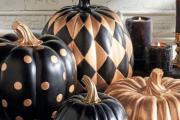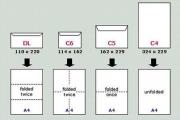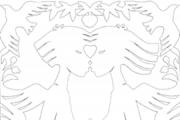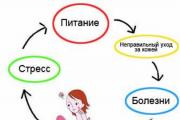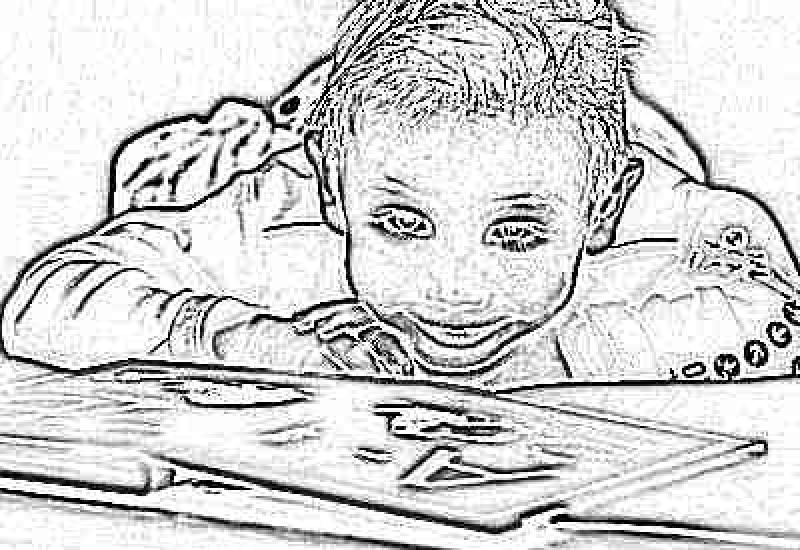Patterns - from simple to complex. Building a base pattern is the most understandable way (for beginners) Models of fashionable dresses and patterns for them
A selection of simple models with simple patterns that even beginners can handle. Without spending a lot of time, in an hour and a half, the new update is ready!
Spectacular dress
An easy dress pattern, which, if desired and with a wide belt, can unexpectedly turn out to be a tunic, which is not a sin to wear with tight black trousers and high platform shoes. Believe me, a beginner without sewing skills can sew a short dress!
 to photo hosting →
to photo hosting →
This pattern for a girl with a height of 164-170 cm and size 46,48,50 will require 100 cm of knitted fabric with a width of 150 cm. Although, if desired, you can always remake this pattern to any size. The skirt is 34 cm long to the middle of the thigh, in the original photo the length of the skirt is approximately 45-50 cm and a piece of fabric must be taken 15-20 cm longer.
 to photo hosting →
to photo hosting →
Fold the fabric with the right side inward, pin along the edge, fold, and several pins scattered throughout the entire fabric. Step back 1-2 cm from the edge of the edge, mark a line and cut the edge along this 1 line. Again, step back 1.5-2 cm from the cut and mark a line, this is the middle of the back.
Step back 1.5 cm from the top cut and draw a horizontal line, on this horizontal line from (.) And to the left, mark points after 11 cm and after 34 cm (.) B.
From point (.) A down the fold after 56 cm, mark (.) B, and from (.) B to the left horizontal, on it 24 cm (.) E and after 36 cm (.) D.
From (.)B downwards the vertical is 33 cm, and from (.)D to the left the vertical is 10 cm.
From (.) G vertical upward until it intersects with the horizontal from (.) D. Make a mate.
From (.) G up, mark 2 cm and smoothly connect with (.) E.
All that remains is to build the boat neck and the upper part of the shelf is ready. From (.) A, put 4 cm down and smoothly connect to the point 11 cm.
Now, before continuing further construction, you need to draw seam allowances. On knitwear, a 1 cm allowance is sufficient. Draw seam allowances along the shoulder seam, neckline, armhole, side seam and hem.
Next you need to build the skirt. Step back down from (.) D 2 cm and from this point draw a horizontal line equal to one quarter of the measurement of your hips minus 2-4 cm (this value depends on the stretchability of the knitwear, the more it stretches, the larger this number, but don’t worry, because fitting will decide everything.) From this point (.) down vertical.
Further down the fold is the desired length of the skirt, I want 34 cm and from this point to the left horizontally until it intersects with the vertical.
From conditional (.) B (conditional because we stepped down 2 cm) to the left one quarter of the measurement of your waist minus 2-4 cm. I have it 19. I wanted to make the waist line 2 cm lower, so the measurements changed accordingly.
Connect point 19 with a smooth pattern line to the side seam. During the fitting, the side seam is adjusted. Draw a seam allowance of 1 cm along the waistline and side seam, a seam allowance of 3-4 cm at the bottom.
Cut out the front and skirt. Attach the shelf to the opposite upper cut, prick, and shallow. Take your time to cut. First you need to draw the neck of the back in accordance with the drawing. Place the skirt, pin and cut out the back and skirt pieces.
Product assembly.
There is a seam on the back, and there you can leave a small cut and make an air loop. Sew back seam. Process the neck of the back and shelves. Connect shoulder seams. The length of the seam to your taste is 5-7 cm or more from point 11. Connect the side seams, the bottom of the sleeve from (.) B by 4-5 cm. Finish the bottom and the cut of the sleeves. Connect the side seams on the skirt. Sew the middle seam of the skirt and, if you want, make a slit for comfortable walking. Gather on the back and front of the bodice. Pair with a skirt. Process the bottom of the skirt. The dress is sewn with a knitting needle, a zigzag seam or a special knitted seam.
For the hardworking - a bright light burns through life, for the lazy - a dim candle
Constructing a base pattern - THE MOST CLEAR METHOD (for beginners)
visibility 917872 views
Good afternoon I would even say a beautiful day. Because we are finally starting a series of articles on tailoring for adults. We have already sewn a lot of things for little girls - both dresses and bodysuits are different - now we will sew for big girls. That is, for myself. And since you and I have already practiced sewing, the fear of the pioneer has passed.
THAT MEANS IT'S TIME TO TAKE A NEW FRONTIER. And master the wisdom of sewing using real adult patterns yourself, with your own hands and your own brains. We will draw the base pattern ourselves - in a new, easy way (I spent more than one week creating this lightweight method for creating a base pattern). And then we will sew a bunch of all kinds of dresses, tops and tunics.
No- I won’t give you a single finished pattern!
I'm not Madame Burda. I am Madame Klishevskaya.))) And the main harmfulness of my character is... That I will make your head work and give birth to bright and clear discoveries in the field of sewing. The easiest and most understandable of all types of art. Believe me, this is true.
Yes- sewing yourself is very easy and simple!
Right from scratch you will get more and more beautiful and well-tailored things.
Moreover, you will do everything yourself, without a state of hypnosis, but in a sober mind and clear memory. YOU will DO it - moreover, you will UNDERSTAND what exactly you are doing.
I will tell you the secrets that I know. Moreover, I will teach you to discover more and more secrets of the world of sewing and clothing design.
I will not lead you (blind and stupid) by the hand in the chaos of letters and numbers denoting the intricacy of numerous lines of the design drawing. NO, I WILL NOT TAKE YOU HERE:
Well, you must admit, one such picture can instill fear and make a girl who doubts her own abilities really, really wants to sew a dress- But I wasn’t very good with geometry and drawing during my school years. Even I, who adore both of these school subjects, beat around the bush for several years, not daring to start delving into the construction of such a drawing: “How long will it take to draw something like this, and after all, everything must be calculated correctly and not get confused in the letters...”.
And, nevertheless, today we will draw a pattern.
We will draw a base pattern (you see a piece of it from above.))))
But - don’t be afraid - we will create our pattern a little differently. Away from the engineering design method - and closer to human understanding.
We will draw one for you - just one- pattern.
And then from it we will create more and more new dress models. And it will be very easy and simple.
- No confusing formulas
- No confusing calculations.
- And without the letter-number cobweb.
So how? Have I already alleviated some of your concerns?
I'll relax now - we won't start drawing right now. First, we'll take a nice walk through the pattern. The purpose of the walk is to get to know and become friends with the pattern and remove the last doubt that you can sew any dress.
So... what is a pattern - the basis?
To put it figuratively, this is a cast of your body. This is your individual imprint. Any item sewn according to YOUR base pattern will fit YOUR figure perfectly.
Yes, you heard right - ANY THING can be sewn on the basis one single pattern. All dress models are born, modeled, and sewn from one source - this is the base pattern.
I will now prove it to you with an example. Even with three examples - in the form of photos and pictures.
Here is the first photo (below). Our pattern base is essentially your sheath dress (the one that fits your body perfectly). Dress made by yours pattern base, will follow all the curves your his bodies. This simple sheath dress is sewn using a regular base pattern. You see, it’s like a plaster cast of a girl’s figure.
And today, having drawn the base pattern, you can safely cut it on the fabric - and you will get a dress like this. The only thing you can change is the neckline - giving it the shape that suits your face shape.
All other (any kind) dress models are just a modification of a sheath dress - fantasies on a free theme.
That's how it works in the fashion world.
One day a fashion designer thought...“What if the bodice of the dress at the top is held on the shoulders by a round yoke (yellow outlines - figure below), and the bodice itself is made in the form of overlapping intersecting triangles (red outlines - figure below). The result is what we see in the photo below.

Beautiful? Beautiful! What did the fashion designer base his fantasies on? Based on a pattern. And you can come up with something of your own. We women have just a lot of imagination.
By the way - since we’re talking about a round yoke here - this site already has one of my articles on creating and
And another fashion designer thought: “What if you give the sheath dress a looser cut - make it wider. And make the shoulder line longer so that it hangs over the arm.” And as a result, a new model is born (photo below) - also very beautiful. And it's very simple.
You can do this too. If you will UNDERSTAND what the base pattern consists of. And by what laws does it exist?
That is why I don’t want to stupidly give you instructions on creating a base pattern (like “draw a line from point P6 to point P5 and mark the place where it intersects line X with the next point...” - ugh!).
I want to awaken you bitch. I want you to feel the pattern, to know its soul. Haven't learned to see what a simple drawing hides behind a photograph of any dress, even an intricately tailored one.
Therefore, for the next 30 minutes we will not draw anything - we will walk through the pattern itself. Let's get acquainted with all its elements - find out what each line serves, and why it is located here and drawn this way.
After such an “educational walk” you will feel a joyful clarity of understanding of everything, everything, everything. It's as if you've already drawn basic patterns many times. And you will take up the drawing with the feeling that this is a couple of trifles. Ha! Business!
As the sage said: “We are afraid only of what we cannot understand and explain logically. But as soon as the thing that frightens us becomes clear to us, it ceases to cause us fear.”
So let’s go and tame this “terrible beast” - the base pattern. Let's tame and draw in 20 minutes. Yes, yes, in 20 minutes - because after a walk - the pattern drawing will seem to you an old and familiar simple drawing - like a grid for playing tic-tac-toe.
Where does the base pattern come from?
So where does the base pattern come from - usually it is obtained from the following drawing:
The drawing contains half of the back part + half of the front part.
We will also draw a similar drawing with you - only more simple and understandable.
And what these halves are needed for, and where to use them - now I will clearly show everything.

Here (!) I dug up a wonderful sample - below - in the photograph of a black and white dress, our halves are very clearly visible - both the back half and the front half. So to speak - clearly and understandably.
Yes, in the Potnovian language the halves are called “shelves”. Today we will draw these same front and back shelves. But first, let’s take a closer look at what elements each shelf consists of. And most importantly, I will tell you why each element is needed and what it serves.
To make everything as clear as possible, I will illustrate each of the elements both in pictures and in photographs of real dress models.
First, let's get acquainted with two incomprehensible words: DOT And ARMHOLE.
Of course you may know them. Or maybe not. My job is to introduce you.
So, meet - PROYMA
When drawing a base pattern, you will create exactly that bend and size armhole that suits you – when the armhole does not pull or dig into your arm.
That is, the pattern base contains minimum armhole size allowed. You can model the armhole to your taste, in any configuration. But your fantasy armhole should not be smaller than on the base pattern. That is, the armhole is based on a pattern - These are the boundaries beyond which your imagination should not cross.
Your model armhole can be as large as you like - but it cannot be smaller than on the base pattern. More - yes, less - no - otherwise it will dig into the armpit. This is the rule in modeling designer armholes.
Now let's get acquainted with the darts.
BACK DARTS – shoulder dart + waist dart
In the picture above, I wrote everything about the back darts - and in the photo of the dress you can find 2 waist darts - one to the right of the zipper, the other to the left of the zipper.
But you don’t see the shoulder dart on this dress. And many dresses don’t have it either. Because for convenience and beauty, this dart is moved from the middle of the shoulder to the zipper (or along the edge of the armhole, where the sleeve will be, a corner is simply cut off). That is, the excess fabric is not pinched at the middle of the shoulder and is not sewn inside the dart. And the extra fabric cut in the form of a corner at the edge of the shelf, where the zipper is sewn in, or at the edge of the armhole - where the sleeve will be sewn in.
Also, darts are not necessary if you sew from stretch fabric - it itself follows the curves of your body and shrinks both in the shoulder and waist areas.
Let's get to know each other next... DARTS ON HALF FRONT
Oh, I could write a whole poem about her.
I spent a long time wondering how to explain more clearly - why it is needed and by what laws it lives. I thought and thought... and came up with an idea.
The fact is that a woman has breasts.))) That is, from the front, an adult girl is no longer flat. This means that the dress should be convex in the chest area. The dart on the front shoulder gives the dress that same bulge in the bust area. Now I’ll show you everything in pictures. How does this happen.
For example, we have a flat piece of fabric, but we need to make a convex piece out of it. To do this, you need to make a tuck on it. For example, this flat circle of cardboard will now become convex with the help of a dart.
And here's how a bust dart creates a bulge on the front detail
You will notice that the top of the convexity (that is, the peak of our round pyramid) is at the tip of the dart. Pay attention to this. Because when we draw the bust dart, the point of our dart will be at the top of the chest(where the nipple or bra cup is usually located).
Remember that sometimes you tried on a dress in your size in a store, which somehow strangely skewed on the chest - this is because the dart in the dress with its point was directed by the tops of your chest. So the breasts did not fit perfectly into the bulge of the dress. This product was not cut at the factory to suit your breast shape.
But that is not all, what I want to say about the chest dart.
The fact is that in almost all dresses this chest dart is located not on the shoulder- A on the side just below the armpit. This is done for beauty. The dart on the shoulder catches the eye more, but on the side, and even covered by the hand, it is not noticeable.
When creating a base pattern, we draw a chest dart on the shoulder only because it is more convenient to draw there from the point of view of constructing a drawing.
And after the drawing of the base pattern is ready, we very easily and simply transfer the dart from the shoulder area to the armpit area. Don’t think that you need to make new drawings for this. Nope, everything is simple here - like opening a carton of milk - one minute and that’s it.
Here, in the picture below I schematically depicted transferring the bust dart from the shoulder to the side seam under the arm.
Well, do you already feel how wiser you have become in these 15 minutes?))) Or else there will be more... Let's continue our walk through the pattern and now let's get acquainted with the lines. Horizontal lines
CHEST LINE
The first acquaintance is the chest line. (It’s a beautiful dress, isn’t it? We’ll make it for you. Don’t even hesitate)

The bust line is the most remarkable line on the pattern. It is so convenient to focus on it when drawing a base pattern because:
- We know that we finish drawing the back waist dart at the bust line.
- We know that we finish drawing the front waist dart not reaching 4 cm from the chest line.
- We know that the shoulder dart is in the front - we finish drawing it at the chest line.
- We know that the lower edges of the armholes also follow the bust line.
Well, no, of course, you don’t know that yet. I will give all these simple rules when we start drawing. And now I just want you to know that when drawing many elements of a pattern, you can simply focus on the chest line (and there is no need to painstakingly put down these letter-number dots).
As you can see, there’s a lot of everything!! Therefore, go ahead - study, sew and enjoy life)))
WHAT TO DO NEXT - WITH THE PATTERN BASE? - you ask
And we will start sewing according to the base pattern of the TOP. Namely tops, T-shirts, tunics and then dresses.
You might ask, “Hey, why not just dresses?” I give the answer to this question in the first article of the series. So to be continued)))
Happy sewing!
Patterns for women's dresses from the Grasser bureau
A dress is the type of clothing that can best highlight the beauty of a woman’s figure. Especially if such a dress is sewn individually. The GRASSER online store offers simple dress patterns that will be of interest to both beginners and experienced seamstresses. In our catalog you can choose patterns for a wide variety of models and for different female figures. Such patterns are created by true professionals from our clothing design and modeling bureau. This ensures that you will encounter minimal complications or problems when sewing your dress.
Advantages of purchasing a ready-made pattern from our bureau:
- The pattern is made for a specific size (from 38 to 54);
- We offer patterns of modern dress models, inspired by fashion shows;
- The pattern comes with an accessible description with diagrams and instructions;
- All dress patterns can be purchased at a very low price.
It’s easy to sew a dress using a pattern!
Even if you are new to tailoring, with a ready-made pattern, the entire process of creating a dress will not take you much time. It is very convenient that all patterns are designed for printing them either on a regular printer on A4 sheets or on a wide-format plotter. Immediately after paying for the order, you will receive your pattern in PDF format, which you can download from your personal account. Using our simple patterns, you will get real pleasure by creating an original new thing for your wardrobe.
Pattern: fluffy dress for a girl with a pleated skirt (for 9 years)

Pattern: fluffy dress for girls with a circle skirt (for 9 years)
How to sew a fluffy dress for a girl
Step 1: For a pleated dress, start from the bottom first. Process the bottom of the product and then add bow folds; you can see how to make a skirt with pleats in this
Step 2: Sew the side and shoulder seams on the top of the dress.
Step 3. Sew the edges on the skirt. If you have chosen a model with a circle skirt (I wrote about how to sew a circle skirt), sweep the top section of the skirt and gather it to the size of the bottom section of the top of the dress. Then sew the skirt to the top.
Step 4. For convenience, sew a zipper into the back middle seam.
Step 5: Sew seams on the sleeves, if any. Baste the top edges and sew in the sleeves.
Step 6. To make the skirt even fuller, you should make a tulle petticoat identical to the main skirt. Pull it over the dress, tuck it in and sew it to the zipper, and then to the seam of the skirt.
Pattern of a fluffy dress for a girl
Download the patterns at the end of the post, open the PDF file and print at full size. Cut out the parts and transfer them onto fabric.

Dress pattern for a 2 year old girl (download below)
What do you need:
- 60 cm elastic fabric for the top,
- 90 cm of knitted fabric for a skirt,
- paper pattern.

The width of the fabric cut for the skirt is 90 cm, and the length depends on your preferences (measure from the girl’s waistline).

Finish the bottom edge of the sleeves. Cut off the excess on the small sleeves (shown by the arrow). Baste and tighten a little so that the top of the sleeve becomes 12.5 cm. Sew the sleeves to the front and back top flange. Sew the side seams on the top of the girls' dress.

Sew the braid to the neckline. It is better to sew with a stretch seam, such as a zigzag or stretch seam.

Process the bottom of the future skirt. Baste the top and tighten the thread until the resulting size for the top of the skirt matches the bottom of the top. Pin the skirt to the top and sew.

Another dress for a girl, made using this pattern
MK: how to quickly sew a fluffy dress with a ballet skirt
And here is another option for a fluffy dress for a girl. It can be sewn together in a matter of minutes, since the top part will already be ready. We will take a blouse of the appropriate size for her.

What you will need:
- Blouse (can be a T-shirt),
- 50 cm of knitted material for the petticoat,
- 1 m tulle,
- elastic band.

Step 1. Cut off the excess part of the sweater so that it ends at the girl’s waist.
Step 2. Sew on a wide elastic band.
Step 3. Cut two trapezoidal pieces from knitted fabric. To do this, attach the fabric to the cut of the blouse and, starting from the waist, draw two oblique lines. Cut out the resulting A-shaped pieces and sew along the sides.
Step 4. Cut the tulle into 2 equal pieces for a two-layer skirt. Baste the cuts along the top and cut to the size of the bottom of the top of the dress (in other words, to the size of the top section of the petticoat). Sew the tulle skirt to the petticoat, and then sew it to the wide elastic band on the top of our dress.
Master class: how to sew a dress for a girl from an adult sweatshirt

Now let's see how to transform your sweater into a dress for a girl. To work, you only need the sweatshirt itself.

First you need to rip off the sleeves. Then attach the child’s T-shirt to the jacket folded in half, tucking it in at the bottom (tuck it where the waist begins). Trace and cut out the top. On the bottom, draw areas for pockets along the top of the dress. Next, draw a straight line to the bottom. Cut out the bottom of the product.

Cut pockets from the remaining fabric. To do this, attach the sections for the pockets on the skirt to the fabric, outline, and draw the remaining part.

From the sleeves of the sweatshirt, cut out sleeves for a baby dress. To do this, attach the sleeve to the top of the dress and draw a curved line from the bottom. Sew in pockets.

Jacket dresses for girls - final
Sew the top and bottom. A dress for a girl from a sweatshirt is ready!
Looking at glossy magazines, sometimes there is a feeling of regret that a dress you really like from a fashion show or from the red carpet, even if you can try it on in a boutique, can only be worn to a party in your dreams. Unfortunately, this dress will remain an unrealizable dream if you do not arm yourself with a basic pattern and model exactly the same model.
Modeling stages and rules
The design process begins with a technical drawing and modification of the top or bottom of the main pattern:
- the selected model is divided into correctly constructed parts according to the most accurately taken measurements;
- body features are taken into account;
- Increases are made for seams or loose fit, depending on the chosen style and material.
The modeling ends with cutting and sewing.


Modeling the bodice by transferring darts
The first step towards modifying the dress is to move the upper chest dart. There are many ways to transfer, for example, into the armhole cut, into the waist or neckline, into the middle of the front, or into the drapery.
To do this, you need to outline its new position so that it is directed to the highest point of the chest. Further along the lines, the pattern is cut and the old dart is closed, revealing a new one.
Below are common options for transferring a bust dart.

To transfer the dart in the shoulder seam to two soft folds, draw two lines on the pattern (in the example indicated by a dotted line) at a distance of 2 cm. Connect the top of the dart with the drawn lines. Close the dart by cutting the pattern along the lines.

Here is an example of a dress with a cutout on the shoulders, where the dart is transferred to the neckline. Then the sleeve is completed and the skirt is lengthened.

Creating draperies
It’s a little more difficult to transfer the dart into the drapery. This is done like this:
- On wallpaper or a piece of paper, use a pencil to trace the outline of the unfolded front bodice pattern.
- From the tops of the two bottom and top right darts, draw lines to the left shoulder. Close the darts, leaving only the left breast piece uncovered.
- Having moved the darts apart, trace a new outline of the bodice, smoothly connecting the top points of the left shoulder.




You can translate both darts at once:
- On the unfolded front bodice, apply shaped bold lines and drapery direction lines.
- On the left half, move the tops of the darts to the upper end of the shaped line (i.e. F) and circle their new position.
- On the right half, raise the top of the second waist dart to the top of the chest dart.
- First cut out the pattern along the outline, then cut it along the drawn lines.
The shaded areas on the pattern are fabric allowances when cutting, which are needed to create draperies.

Swing collar
A beautiful drape at the neckline can be created in many ways, but they start with closing the dart.




- Measure the length of the shoulder seam, then draw the shaped lines. Cut them, leaving 1 cm uncut along the shoulder line.
- Expand the resulting parts, draw a horizontal line from the highest point of the shoulder line.
- Create a one-piece lapel.

A few more examples of modeling a swing collar.


Modeling a fluffy dress
A short dress with a voluminous skirt and an asymmetrical cutout on the bodice will allow you to be a queen at any celebration.

- On the front bodice, move the left breast dart to the side seam, and the right one to the waist line.
- Move the left dart at the waist 2 cm to the center.
- Reduce the shoulder length to 7 cm and make the neckline higher.
- Make the armholes 2 cm deeper.
- Draw a petal-shaped cutout and cut the pattern along the modeled lines.
- On the back, as on the front, shorten the shoulder and deepen the armhole.
- Draw a triangular cutout, leaving 23 cm along the middle line.
For the skirt, draw a rectangle of the required length, the width of which will be equal to two hip circumferences. If the width of the fabric is not enough, cut the skirt out of two pieces.
The petticoat consists of two parts:
- 1st – top, 25 cm long and one and a half waist circumference wide;
- 2nd – bottom, width equal to two hip circumferences.
The entire length of the petticoat is made 2 cm shorter than the skirt.

Construction of loose dress patterns
A loose-fitting dress is an option that is created in a hurry, because it is suitable for a beginner in sewing. It does not require a zipper, it simply leaves an unstitched area along the back for sewing on a button.

- Mark the back with a dotted line and spread it 12-14 cm. The splendor of the folds will depend on the angle of inclination.
- Round the hem line and make the armhole and neckline deeper.
- On the front of the dress, move the chest dart to the waist. The front should be a little more flared, so add 4 cm to the bottom line of the back and front.
- The side lines of the two parts are straight segments.

If you want a dress that is short in front and long in back, on the back pattern created above, measure the desired length in the middle of the fold and draw rounded lines to the side seams.

Modeling a short dress - the sun is similar to a real flower, as it allows you to create volume with many coattails.

Having drawn a rectangle, create a pattern for the front and back with a shoulder length of about 5 cm. Cut out the parts with a fold.

Dress from Dior
An unusual fitted dress from the catwalk, decorated with a cord and with two pockets, will appeal to many.

When modeling this dress, you need to take into account some nuances:
- The relief from the neckline smoothly extends to the back through the side seam.
- There is a zipper inserted in the side sections.
- The sleeve is made with two seams, one of them will hide the cord.
- Sleeve cuffs are stitched. If the fabric is very dense, the sleeve flap on the inside can be made from lining fabric.
- Patch pockets.
- If the fabric frays, immediately process the cuts, for example with an overlocker.
- The cord is sewn by hand, with hidden stitches, on both sides.

